Overview of Jade Plants
Crassula ovata is a common houseplant that is usually called jade plant, or less frequently referred to as friendship plant, money plant, or money tree. Previously classified as C. argentea, C. portulaca and C. obliqua, it is still occasionally sold under these other, older (and incorrect) names. This species is just one of about 300 in a diverse genus, part of the orpine family (Crassulaceae), about half of which are native to southern Africa. The name crassula means thick or fat, referring to the fleshy nature of the genus, and ovata means egg-shaped, referring to the shape of the leaves of this species. C. ovata is a prominent component of valley thicket vegetation of the Eastern Cape and KwaZulu-Natal. The very similar C. arborescens, which has almost spherical blue-gray leaves with a distinct waxy bloom, is found in a different area, in the Little Karoo and Central Karoo. It has compact, rounded heads of pink flowers. The Khoi and other Africans used the roots for food, grated and cooked, eaten with thick milk. They also used the leaves for medicinal purposes.
Jade plant is an easy-to-grow succulent that stores water in its leaves, stems, and roots. It has been used as an indoor ornamental throughout the world and a landscape plant in mild climates. It makes a good houseplant as it grows well in the restricted root space of containers, is relatively slow growing, likes the warm, dry conditions found in most homes, and tolerates neglect.
In its native habitat, C. ovata grows into a small, rounded evergreen shrub (to 6 feet) on dry, rocky hillsides. It has many short, thick, succulent branches on a gnarled-looking trunk, suggesting great age even in young specimens. The bark peels from the trunk in horizontal brownish strips on old plants.
The smooth, rounded, glossy, egg-shaped leaves are about 1 to 3½ inches long and ¾ to 1½ inches wide, and are borne in opposite pairs, with each pair at right angles to the next pair. They tend to be clustered at the ends of the branches rather than spaced evenly along them. The green, fleshy leaves should be edged or tinged with red when grown with sufficient light. New stems are also green and very succulent, just like the leaves, but they become brown and woody as they mature. The lower leaves will slowly drop off naturally. If the leaves get burnt – from sunburn, insecticide damage, or frost – the damaged leaves will die and fall off, but new leaves will sprout.

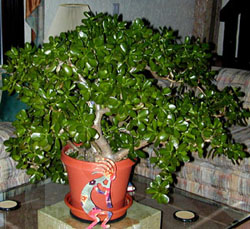
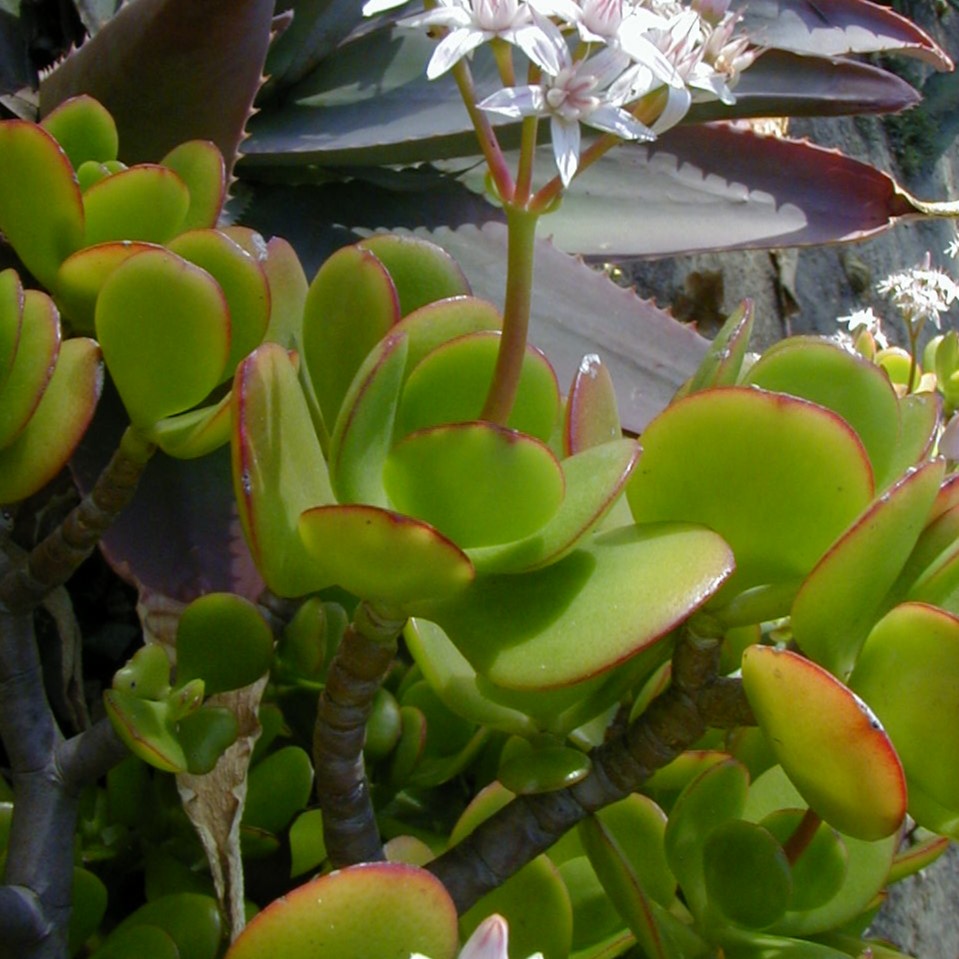
Tight, rounded clusters of small white or pink, star-shaped flowers are produced in response to long nights. The flowers have a faint sweet scent and are attractive to bees, wasps, flies, beetles and butterflies. Under ideal conditions and bright light, flower clusters can cover the plant in masses thick enough to hide the foliage. Under good conditions, pollinated flowers produce a small capsule filled with seed. To encourage bloom, withhold water in the fall and keep plants under cool conditions (around 55˚F), especially at night. Keep plants in an area that will not receive any supplemental light so the natural shortening days of the season will trigger flower initiation. Several weeks of cold, dry, dark treatment, followed by regular watering should result in flowering.
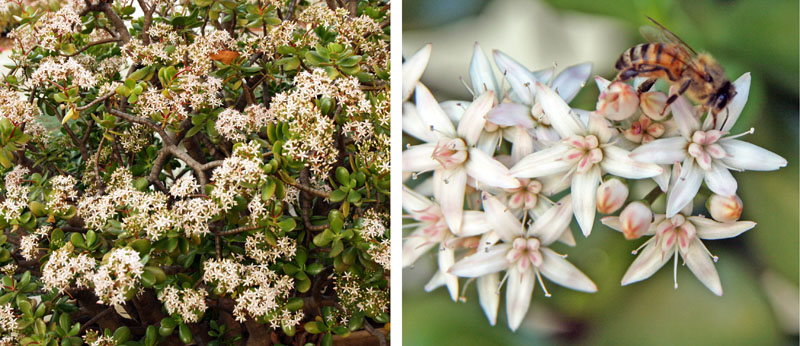
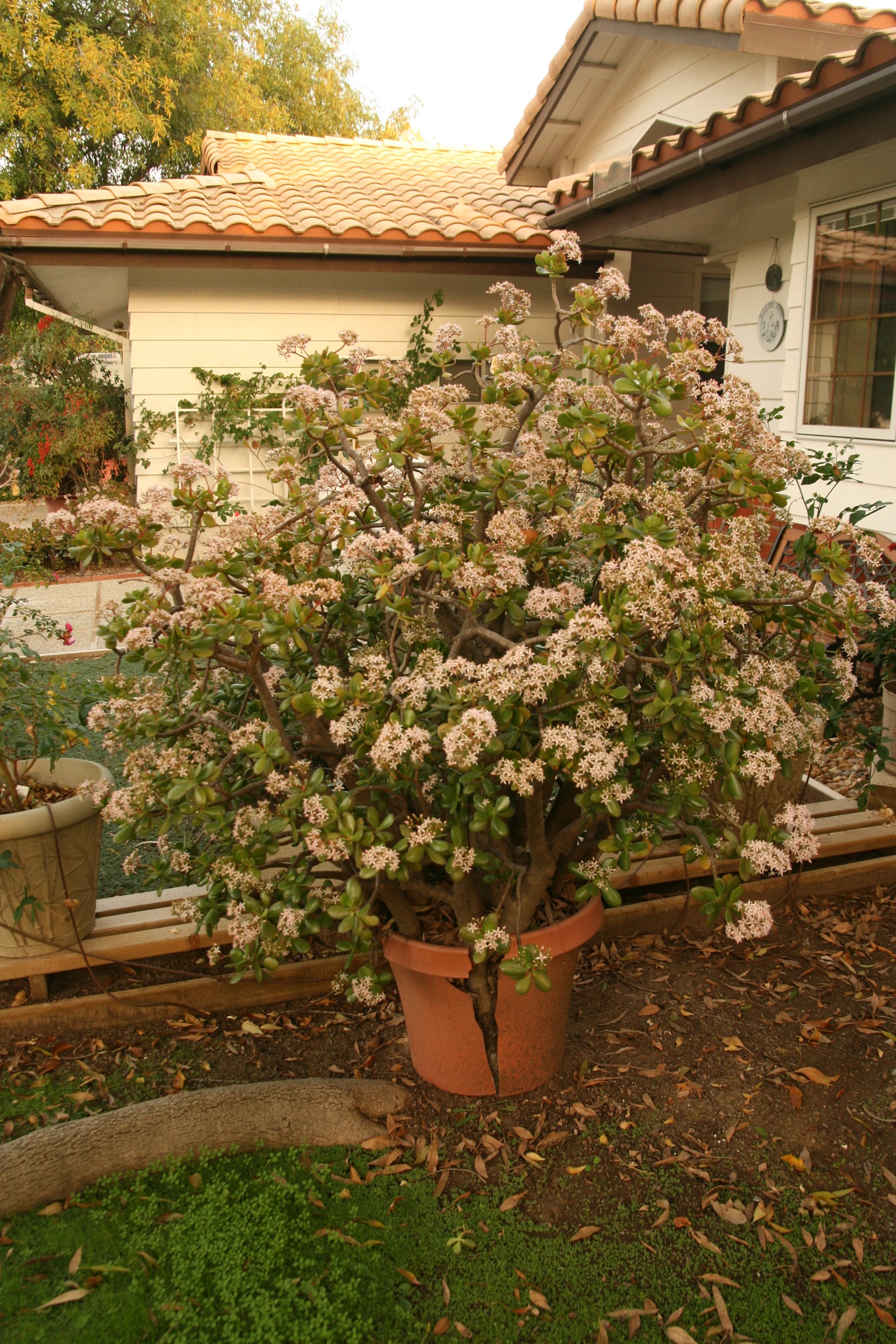
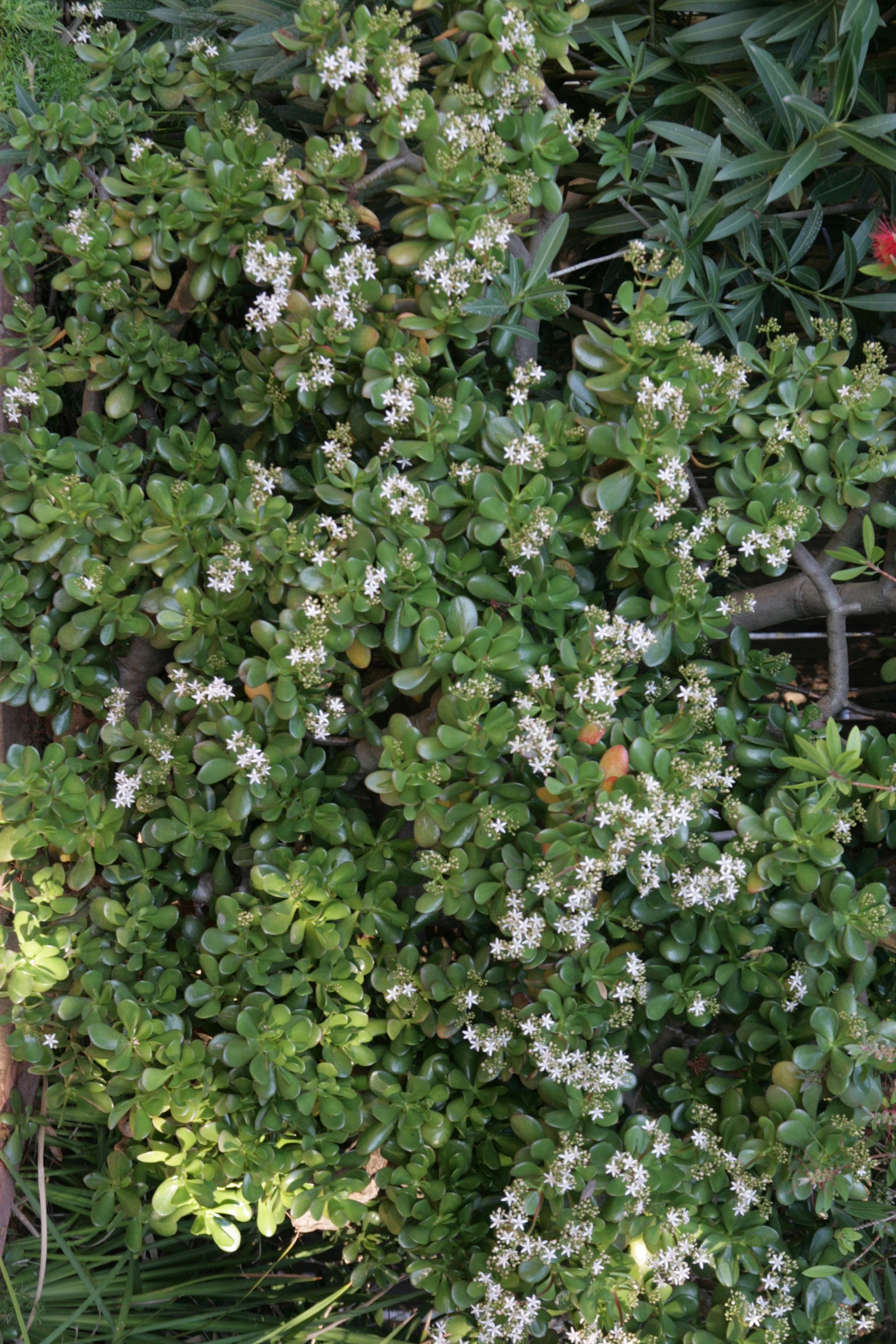
General Care of Jade Plants
Jade plant does best with four or more hours of direct sun, but they will survive in bright, indirect light. Inadequate light will produce a plant with deep green leaves and drooping stems – there is nothing wrong with the plant other than it doesn’t have enough light to produce normal compact growth and reddish coloration. This plant is tolerant of a wide range of temperature and humidity and may even tolerate light frost but will be killed by freezing conditions. Houseplants can be moved outdoors for the summer but need to be acclimated gradually to the higher light intensity outdoors to prevent sunburn. They must be brought indoors before the first frost.
Jade needs well-drained conditions and does best in well-drained, high-porosity potting mixes designed for succulents or cacti. To increase the drainage of standard potting mix, add extra perlite or sharp sand to the media before potting. Individual plants can be grown for many years while root-bound, although it is best to repot them every two to three years or when a plant becomes top-heavy and susceptible to tipping over. The best time to repot is as new growth starts. Prune the roots when re-potting into the same size pot and cut back the stems to maintain the shape and encourage development of a thick main trunk. Water sparingly until established in the new container.
As with almost all succulents, they do best when the soil is allowed to dry out between deep waterings. Plants can be watered liberally during active growth, in spring and summer, but should dry out slightly between waterings and should not be allowed to sit in water. In winter, when they are semi-dormant, watering should be restricted, and the soil should remain on the dry side. Overwatering will cause the leaves to drop and the stem to rot. Even though they are succulent plants, they do need water; drought can result in dwarfing, foliage spotting, leaf drop and death. Jade plants can be fertilized every two months during active growth or use a dilute fertilizer more frequently.
Jade plants benefit from pruning to keep them compact and growing vigorously. This is best done in spring by cutting stems back to a lateral branch. Pruning encourages the trunk to develop to be able to support the weight of the heavy leaves and stems and also encourages root growth. They can be pruned into miniature trees and make an excellent choice for a succulent bonsai specimen or a wonderful sculptural plant. The cuts will heal over in a few days and new growth will sprout within a few weeks.
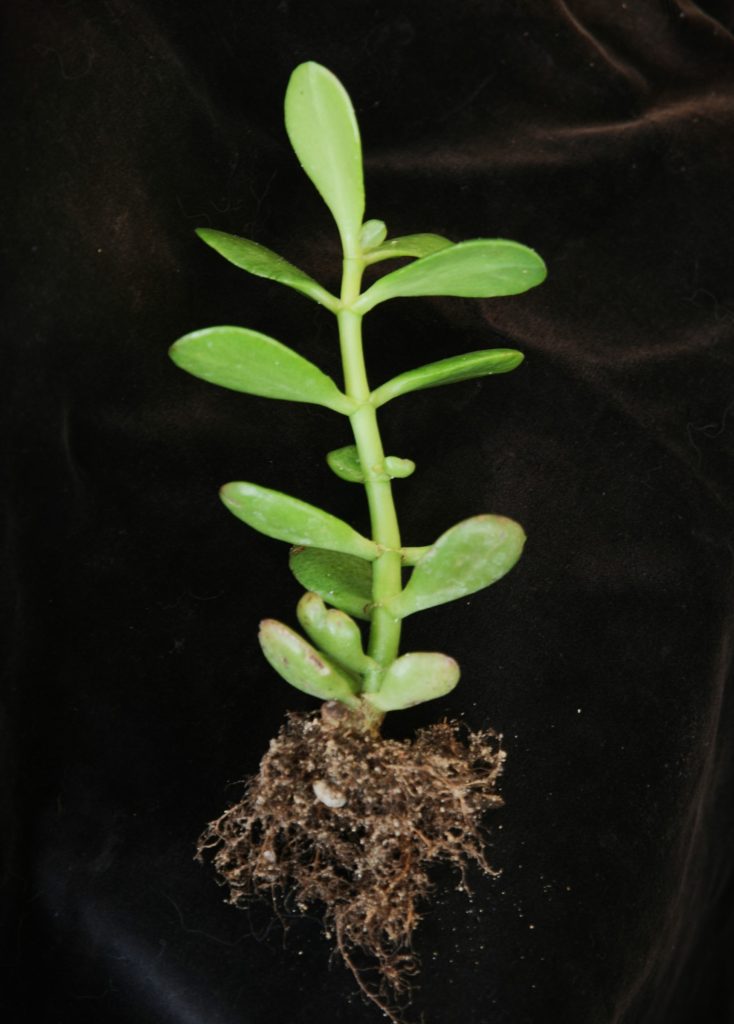
Propagating Jade Plants
Jade plant is especially easy to propagate from stem or leaf cuttings. In the wild or when planted outdoors in mild climates, leaves or pieces of plant that break off and fall to the ground will root in a few weeks. When taking cuttings, it is best to allow the pieces to dry for a few days so the cut surface will be healed over and less likely to rot. Inserting the cut end into fairly dry, well-drained soil will speed rooting, although they will produce roots even out of soil. Cuttings root most easily in summer but jade plant can be propagated at any time of the year. This plant can also be grown from seeds sown in spring or summer.
This plant has few pests, but mealybugs are the most common insect pest. Infestations of the white, fluffy insects can deform new growth. The insects can be wiped off with a cotton swab dipped in rubbing alcohol, but the plants need to be cleaned frequently for several days or weeks until all of the pests have been eliminated. Use caution with insecticides, as there can be problems with phytotoxicity on the succulent leaves. Spider mites can also occasionally infest jade plants.
Jade Plant Cultivars
There are a number of named cultivars of C. ovata, although these may not be readily available in all areas.
- ‘Bronze Beauty’ has small coppery green leaves on extremely slow-growing stems.
- ‘California Red Tip’ has purplish red edged leaves when grown in bright light to full sun.
- ‘Gollum’ has leaves that are nearly tubular, with a reddish tint, and look as though the end is a suction cup.
- ‘Hobbit’ has tubular looking leaves with reddish ends and dense foliage.
- ‘Sunset’ has green leaves streaked with cream/white and pinkish red.
- ‘Tricolor’ is a chimeral variety with creamy white-and rose-striped pointed leaves and pink and white flowers.
- ‘Variegata’ has bicolored leaves.
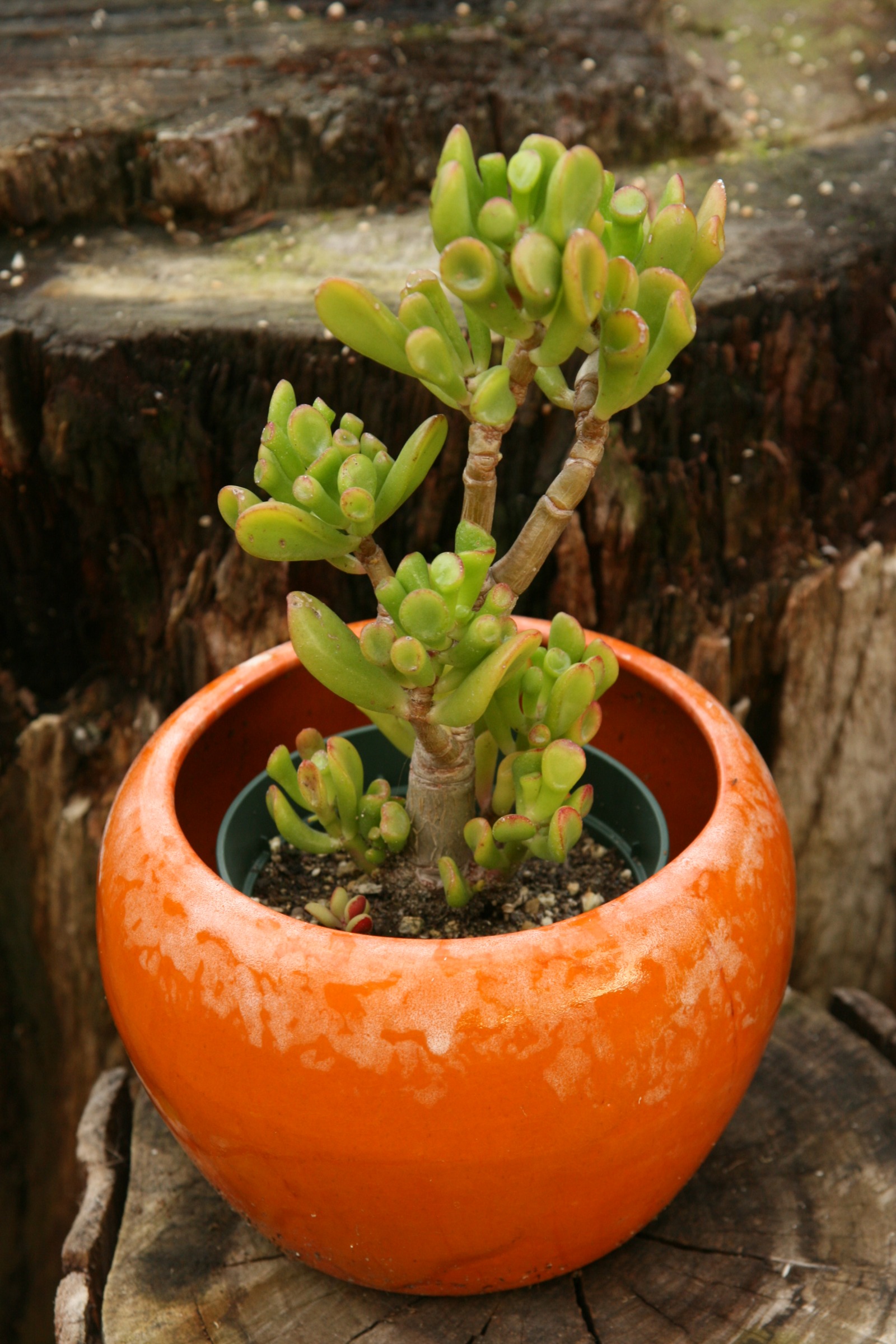
– Susan Mahr, University of Wisconsin – Madison
Last Update: Bruce Spangenberg, UW-Madison Extension, 2025





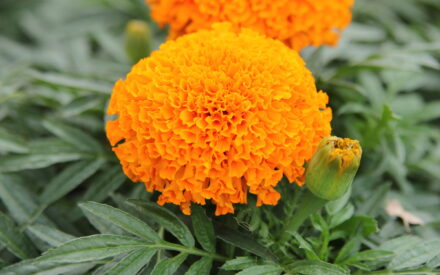 Marigolds
Marigolds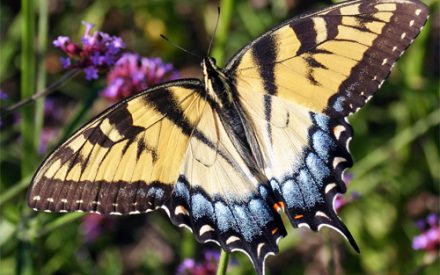 Create a Butterfly Garden
Create a Butterfly Garden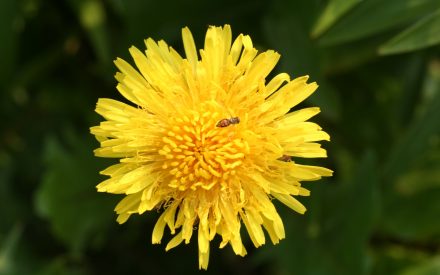 Plant Flowers to Encourage Beneficial Insects
Plant Flowers to Encourage Beneficial Insects Forcing Bulbs
Forcing Bulbs


